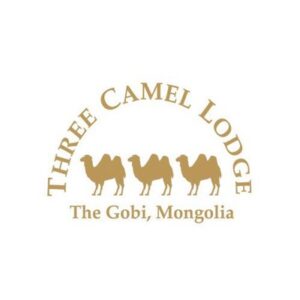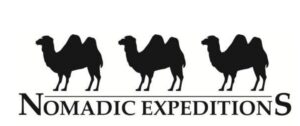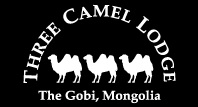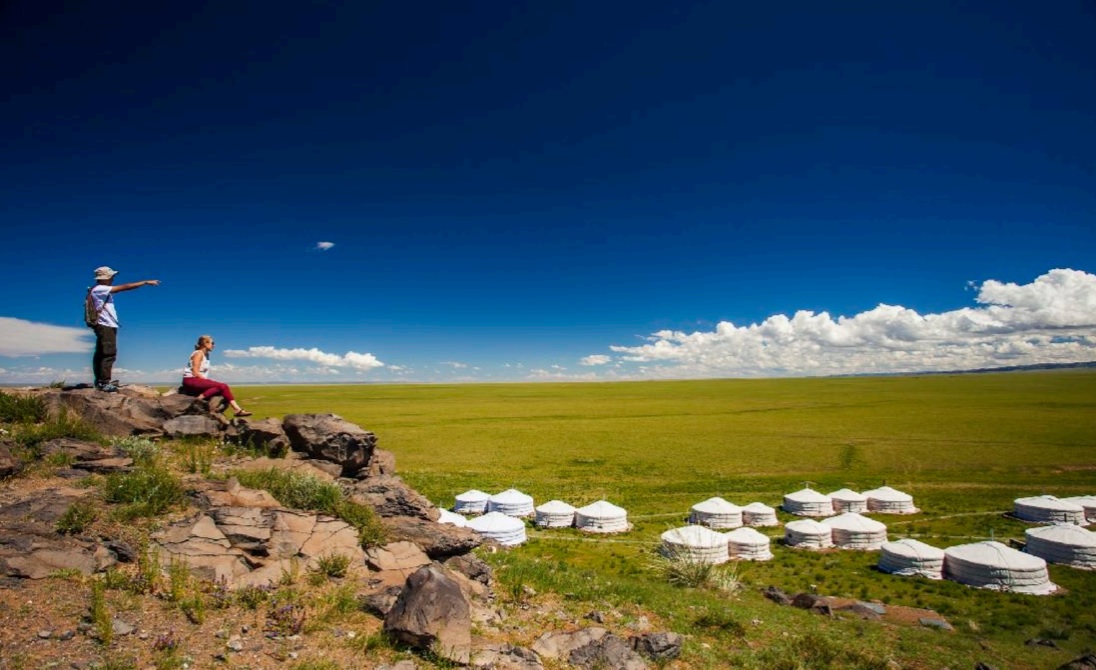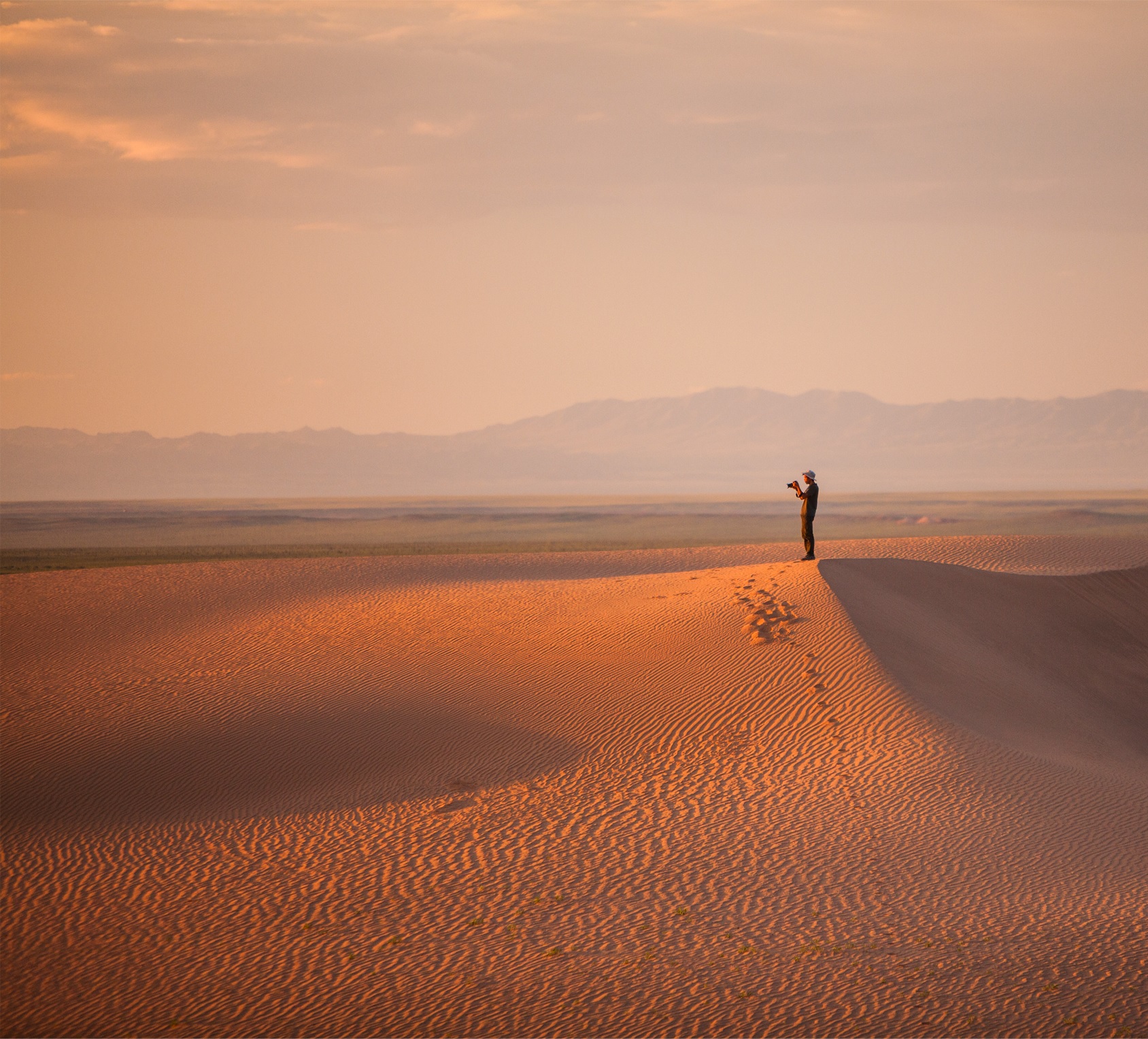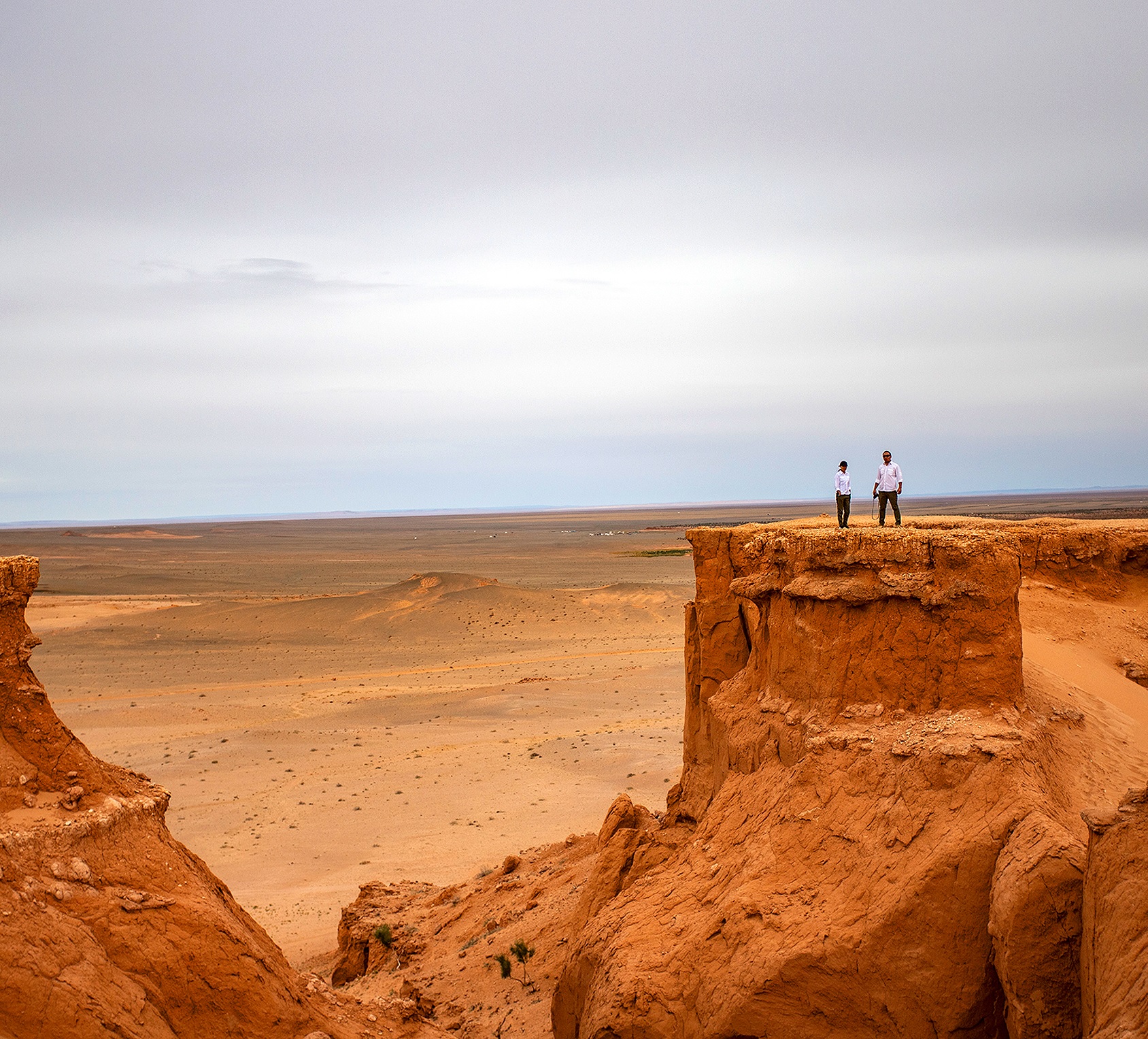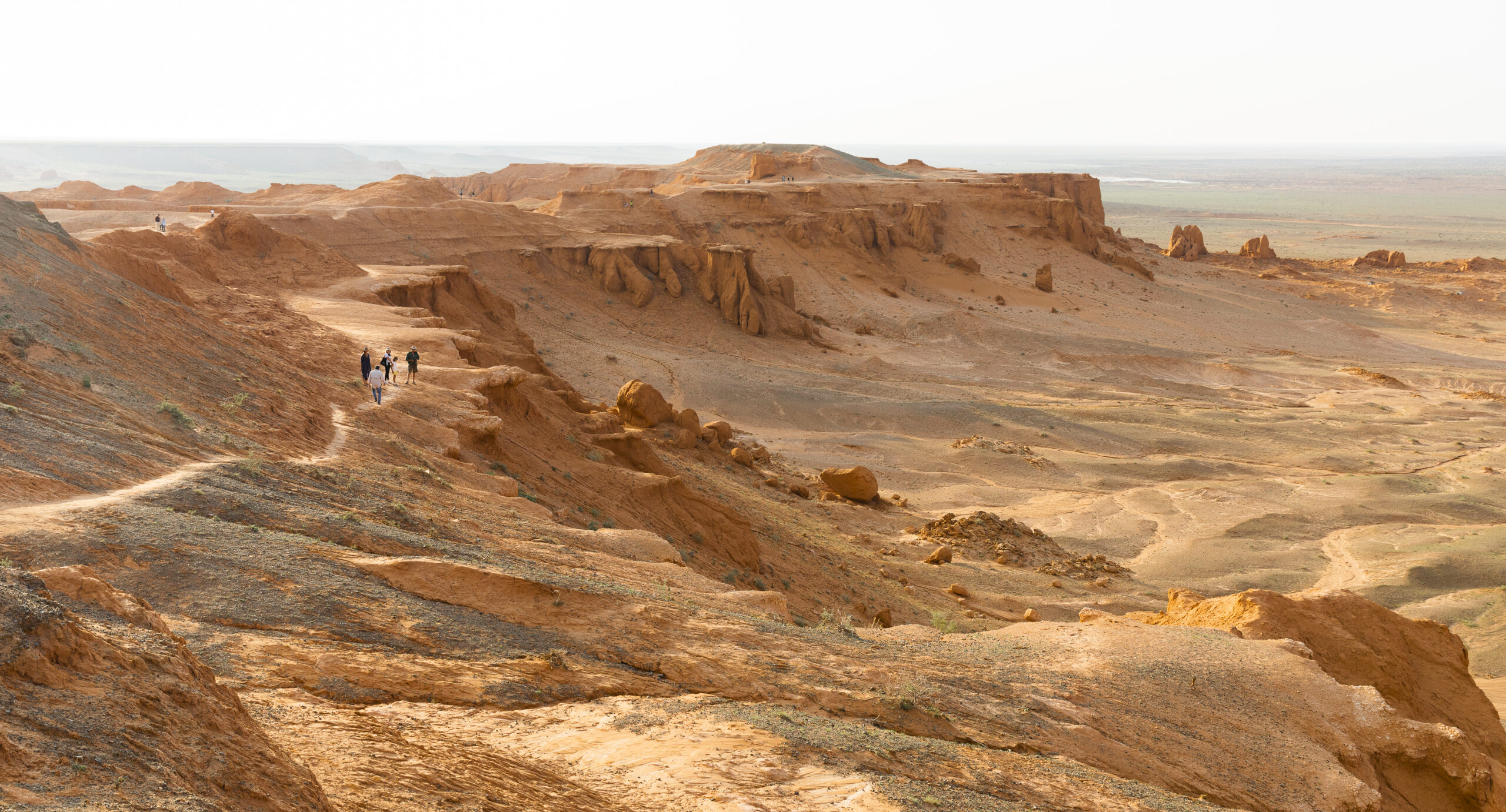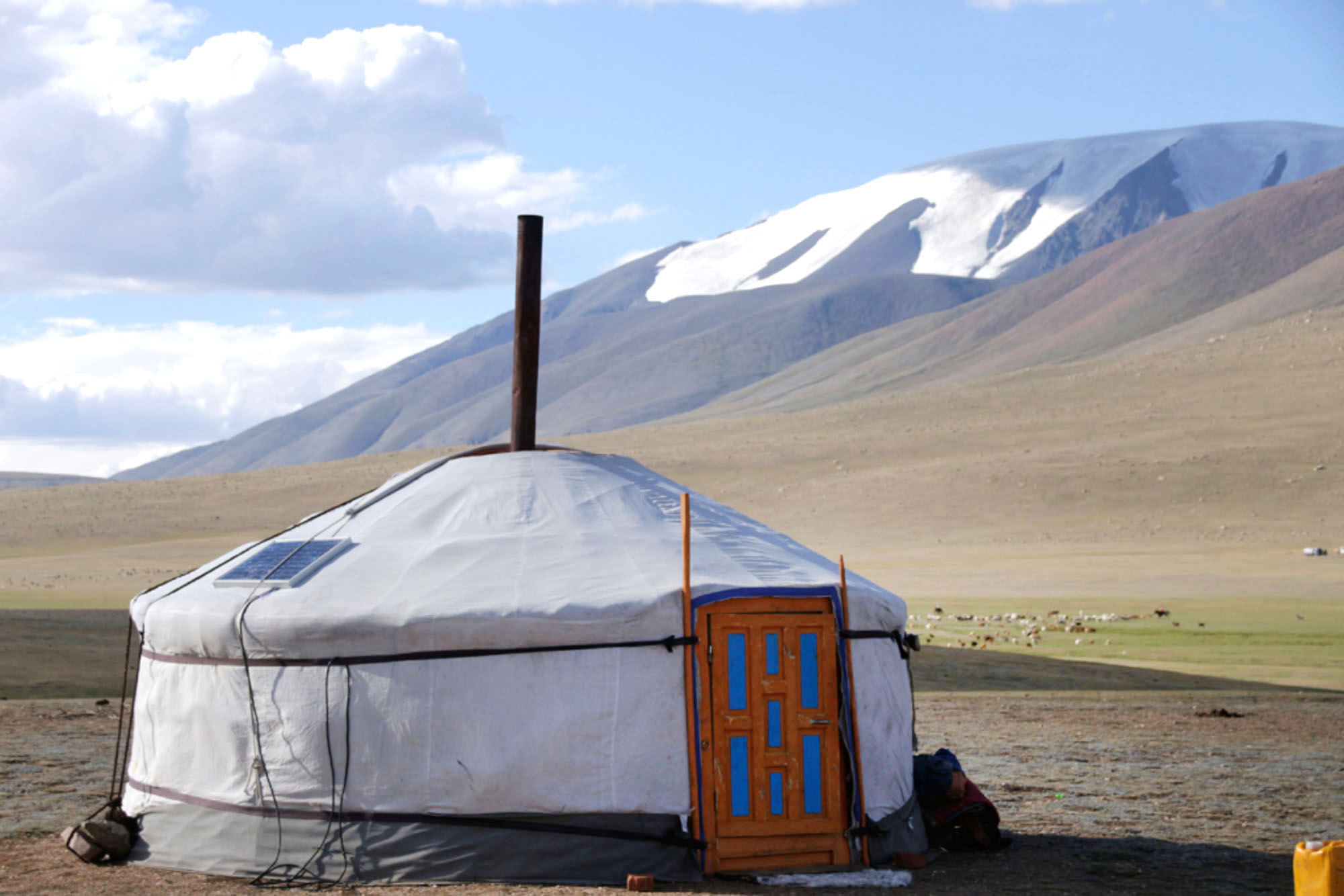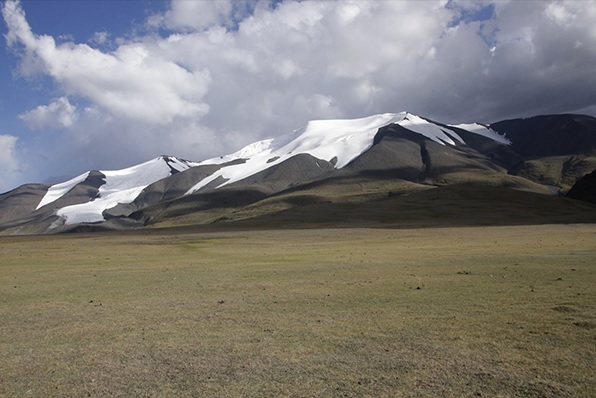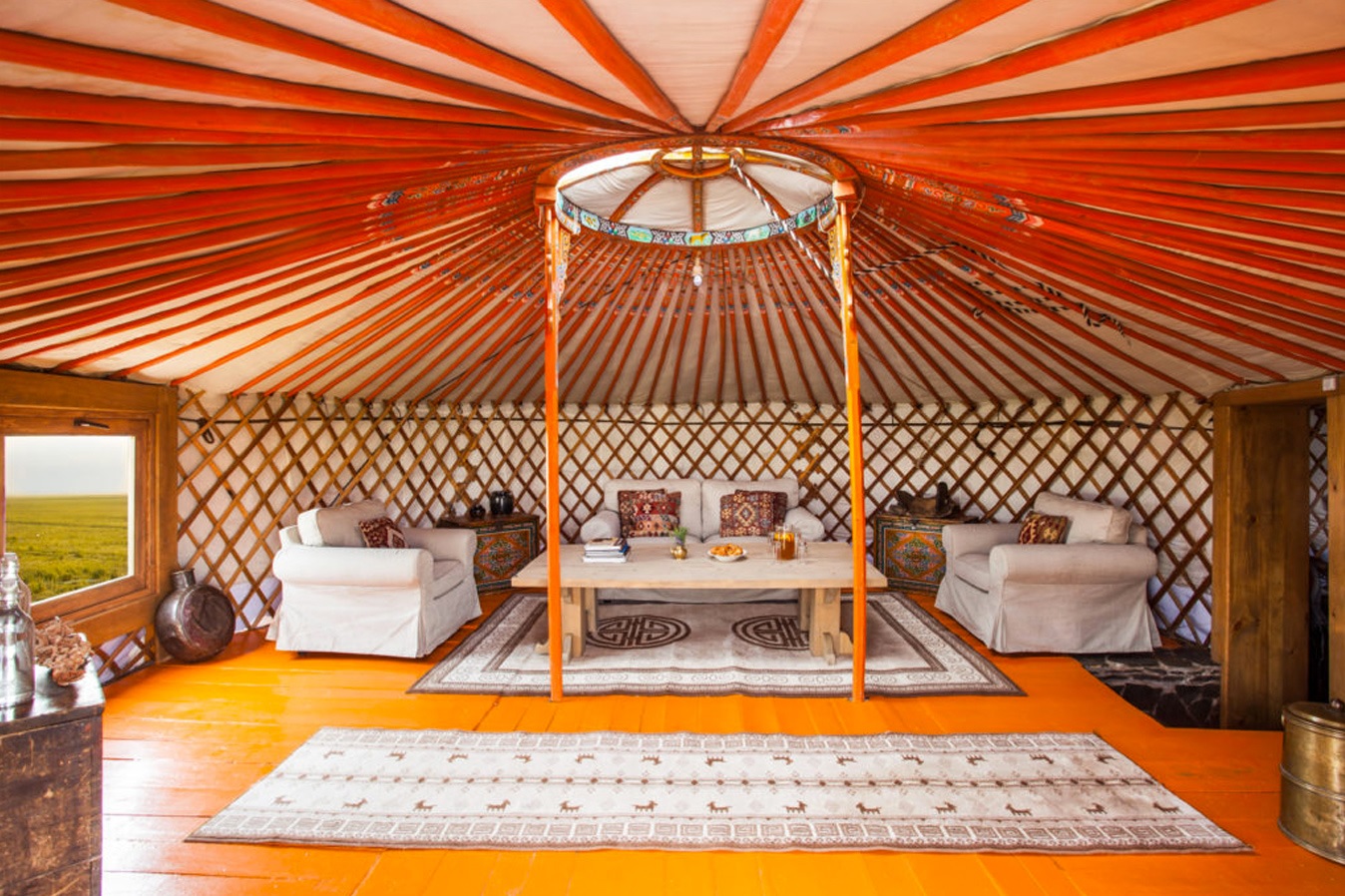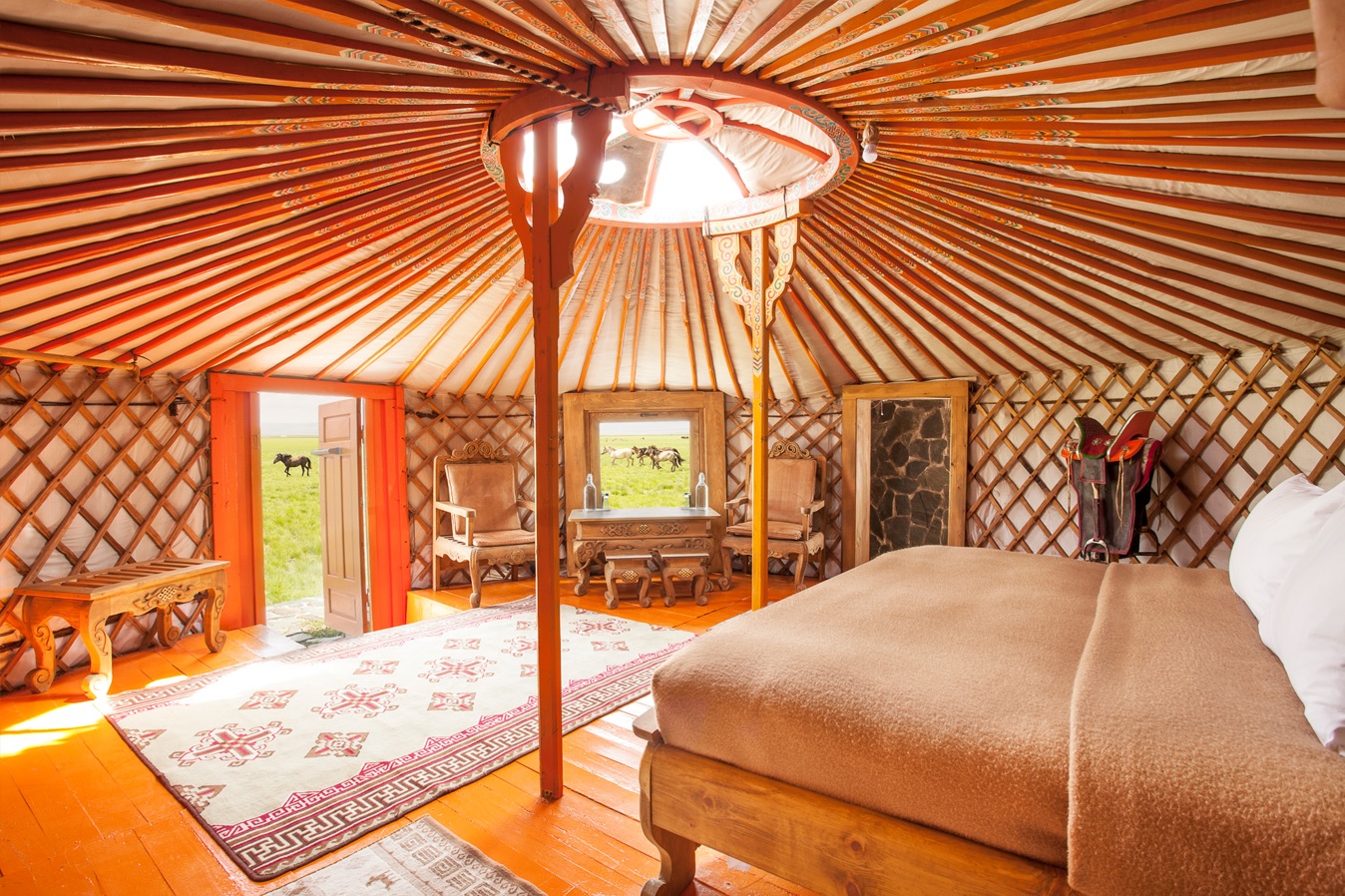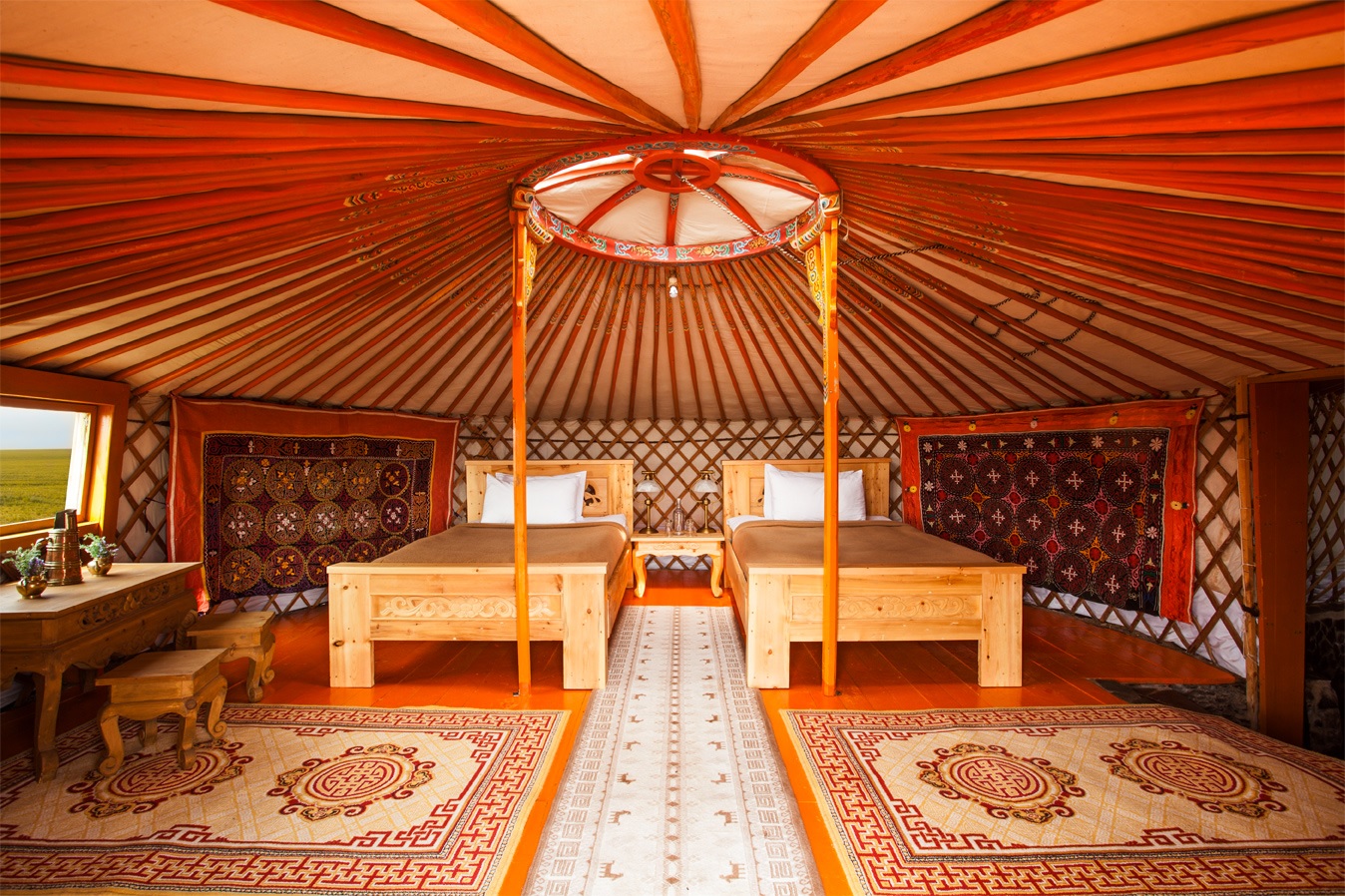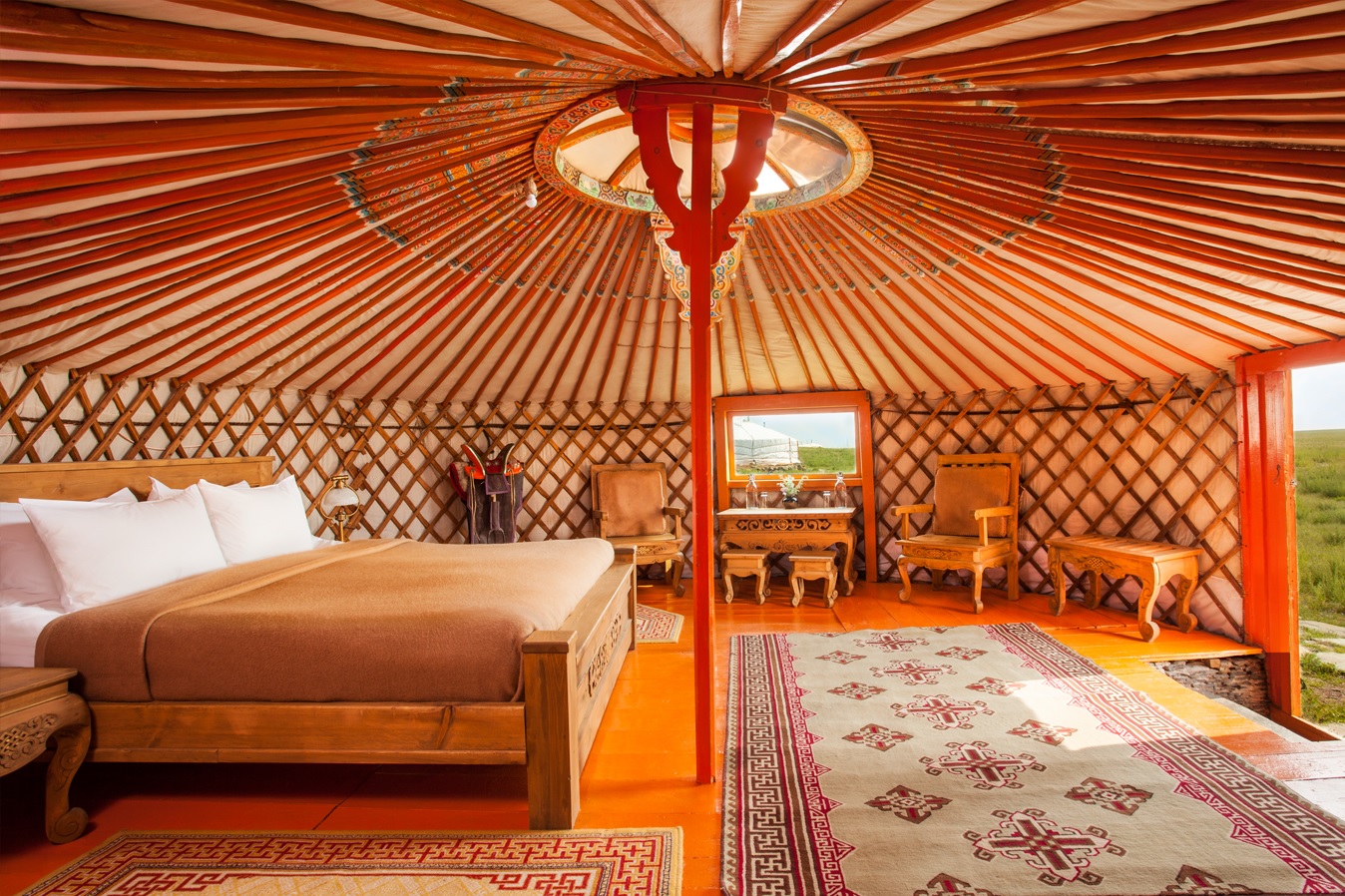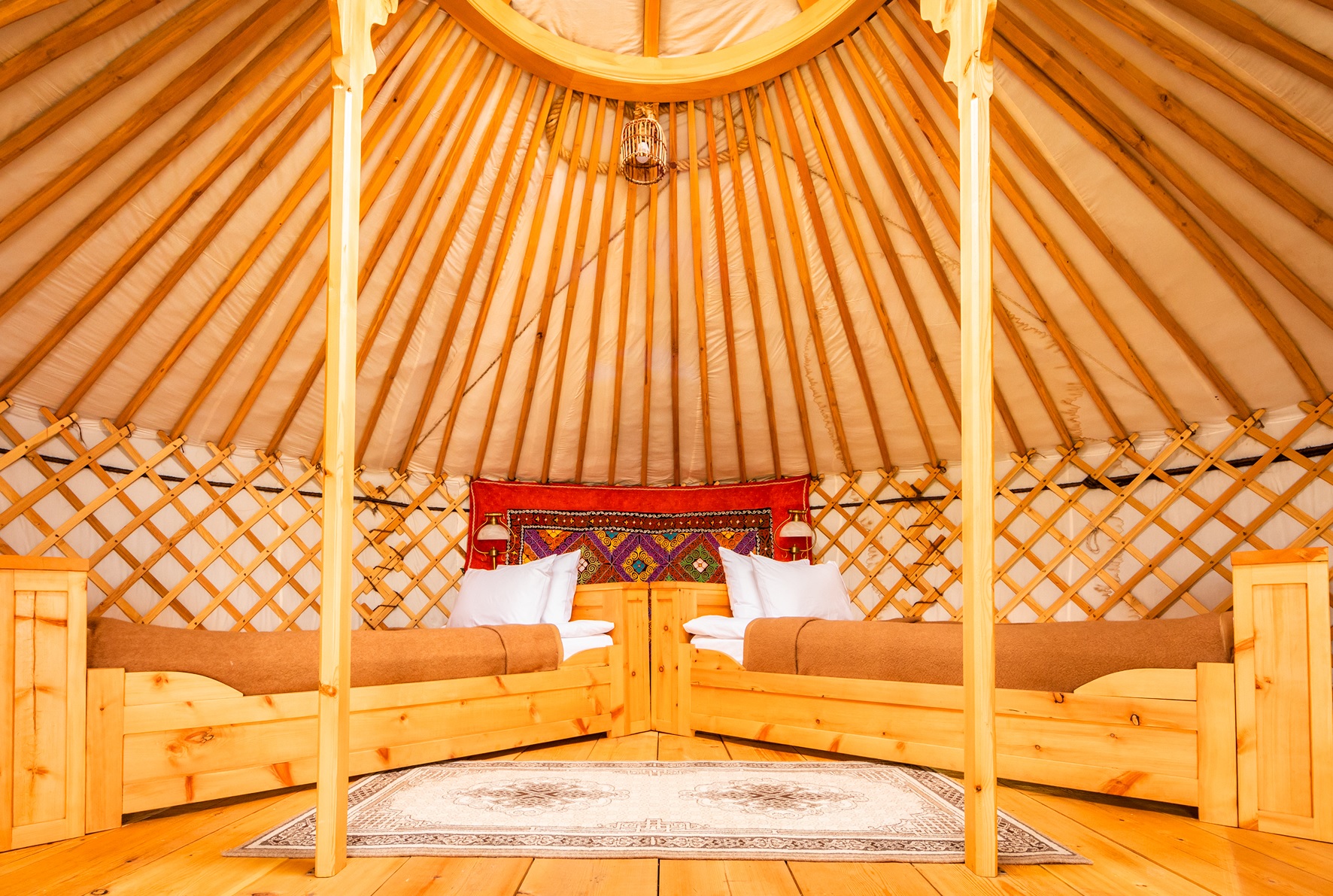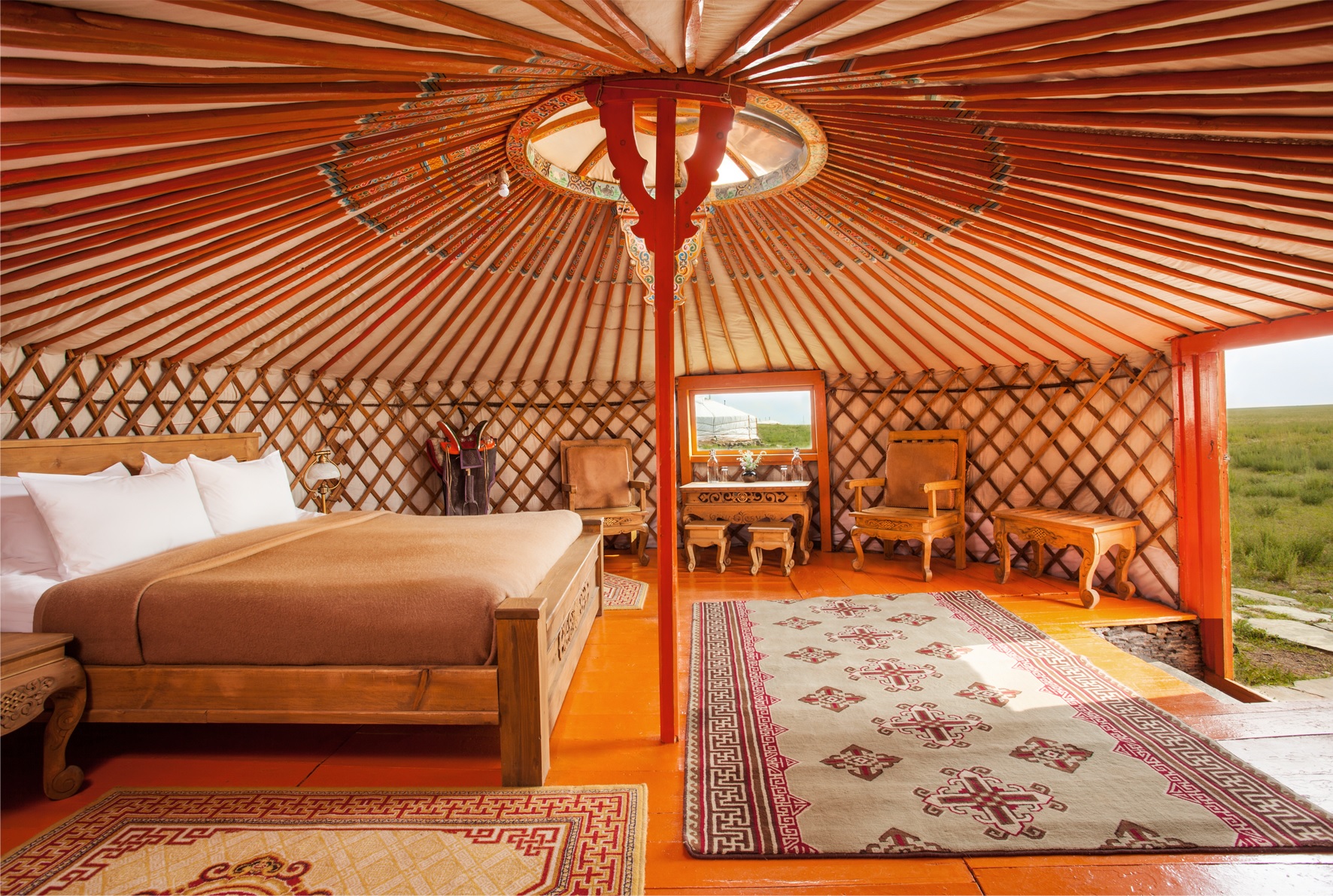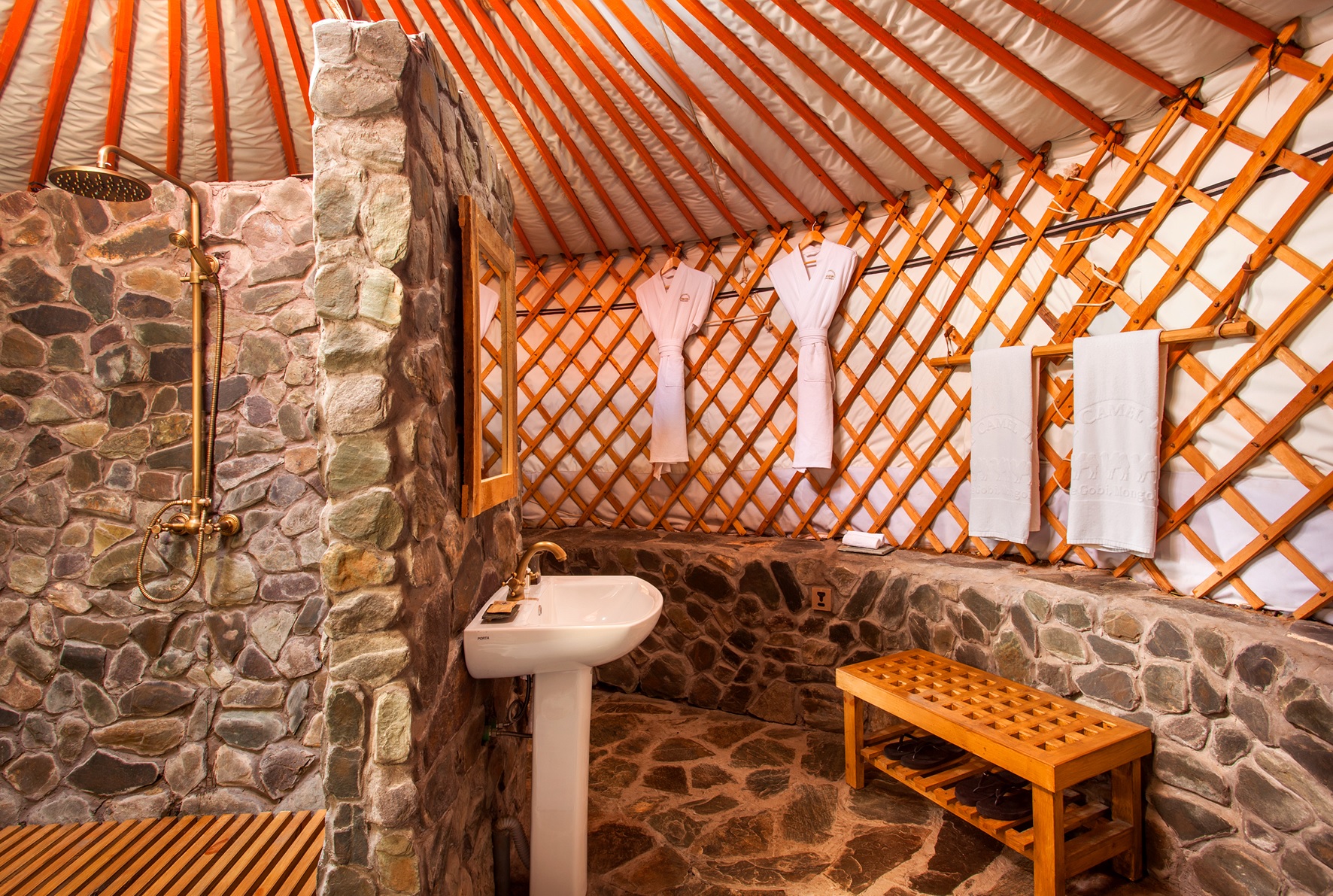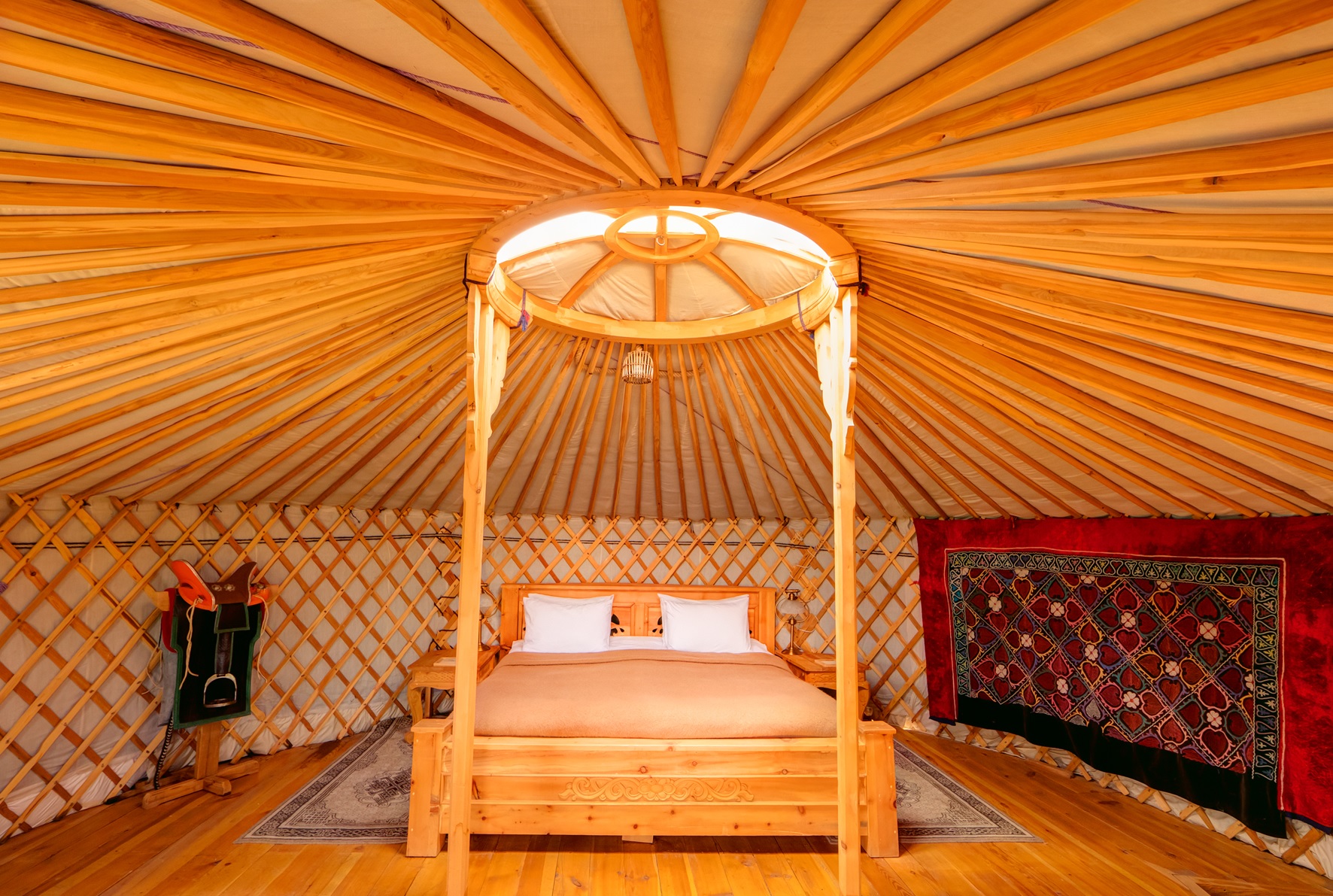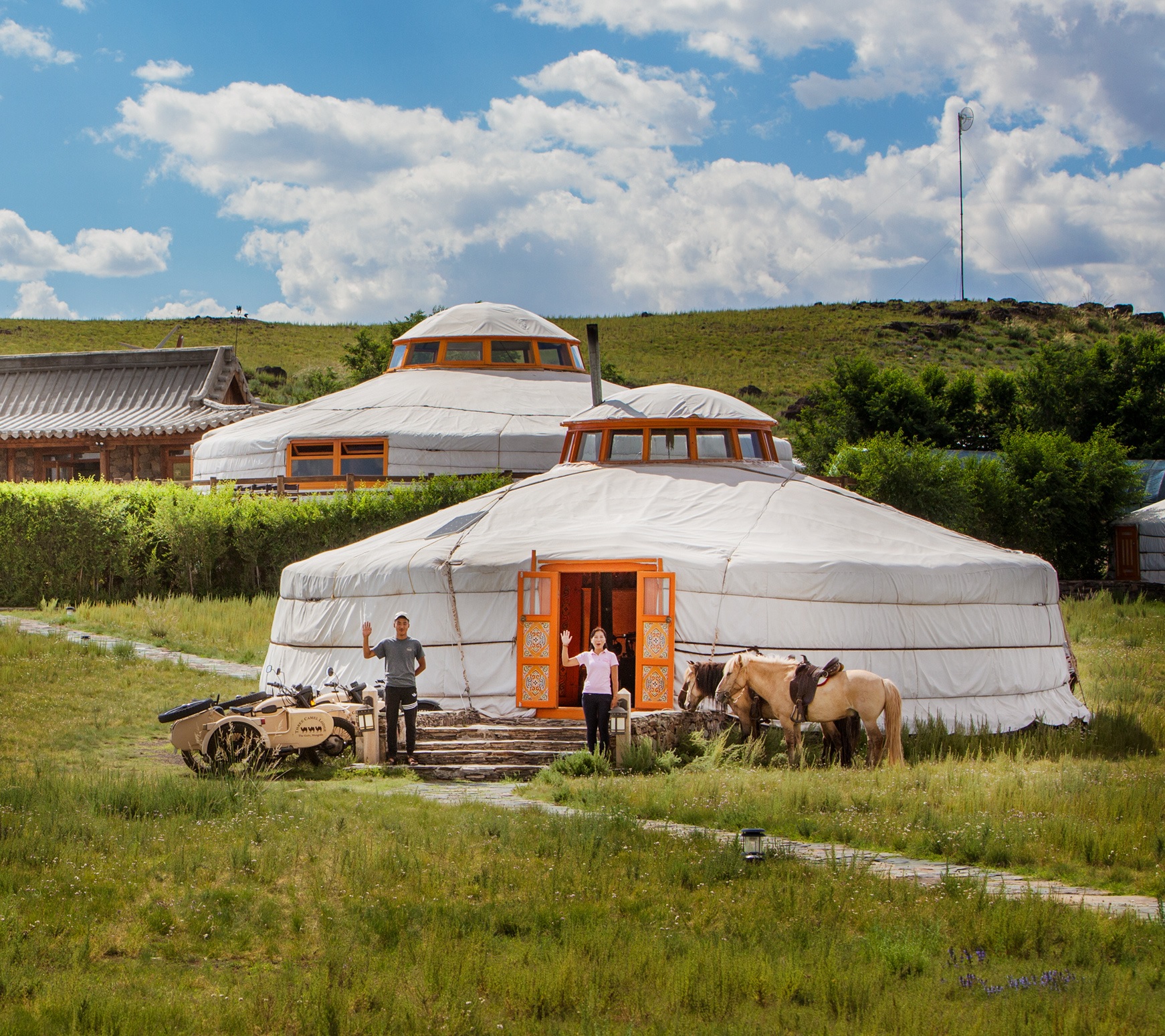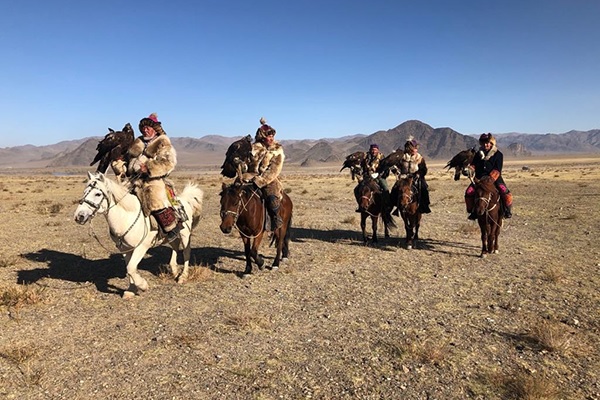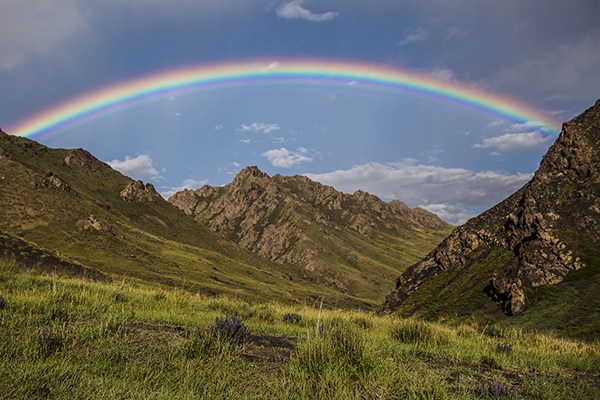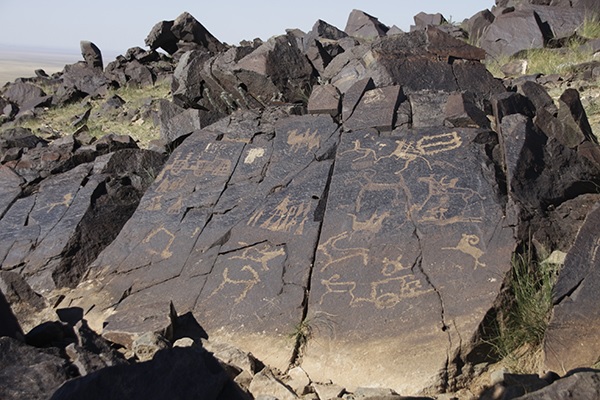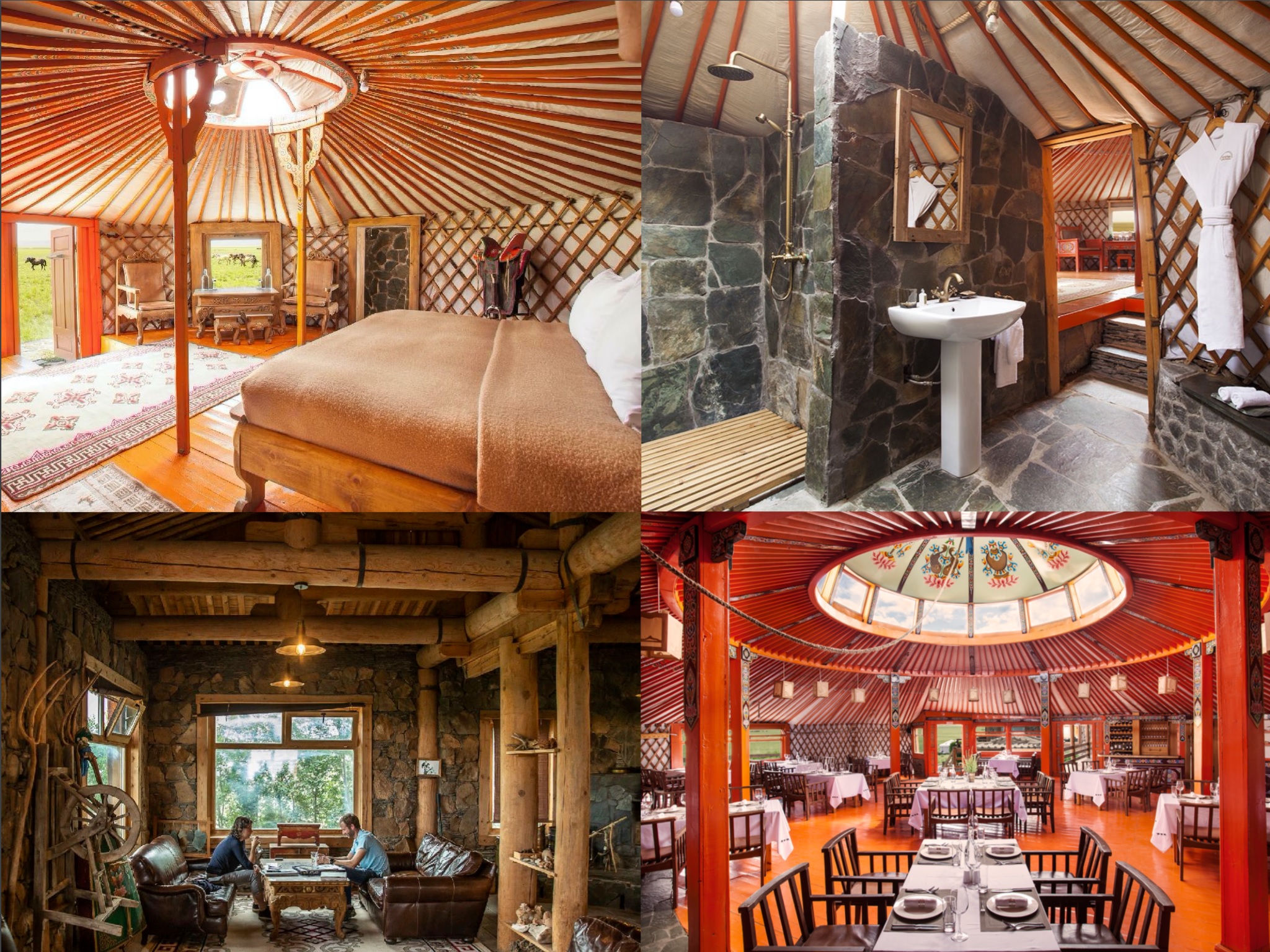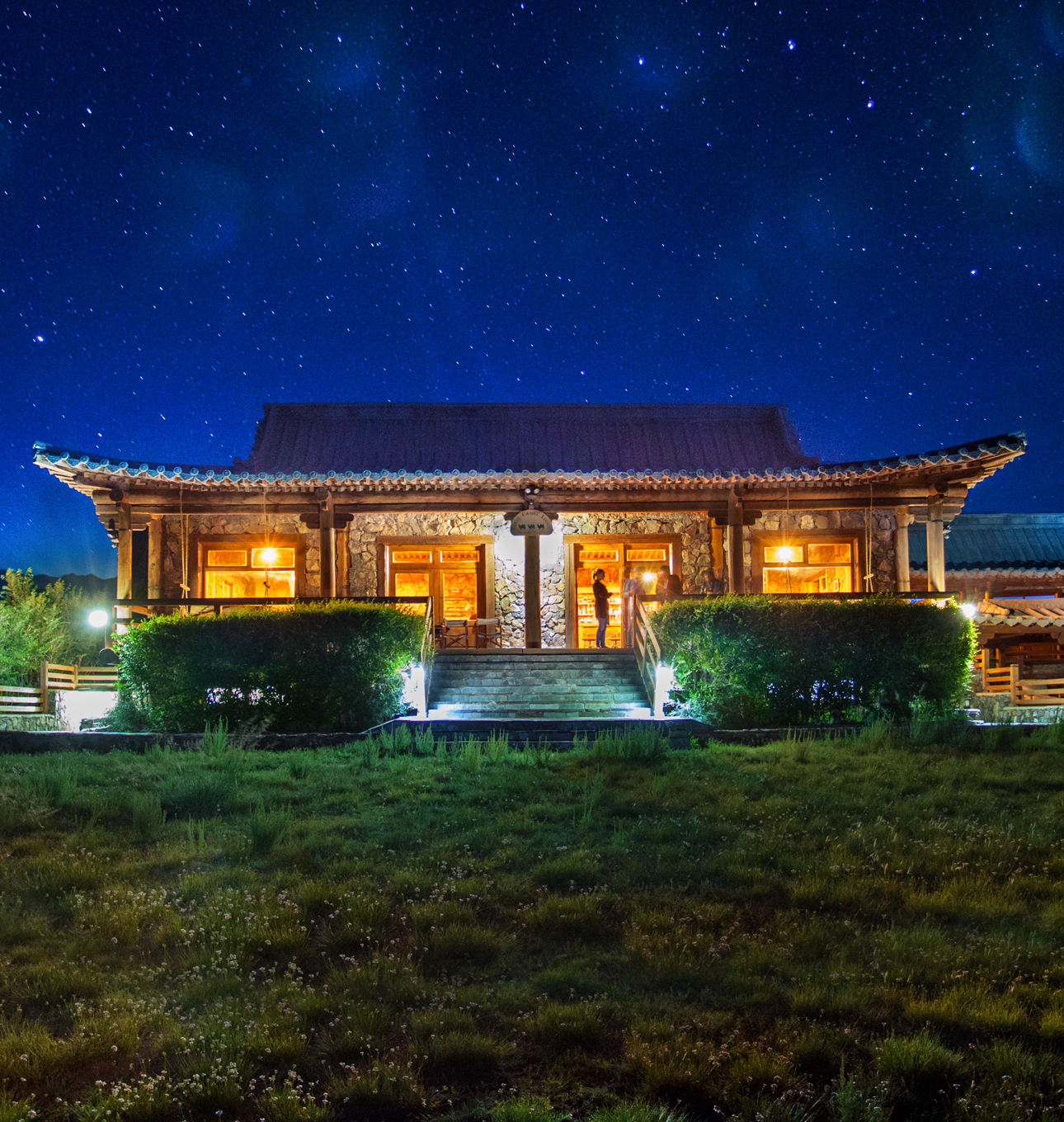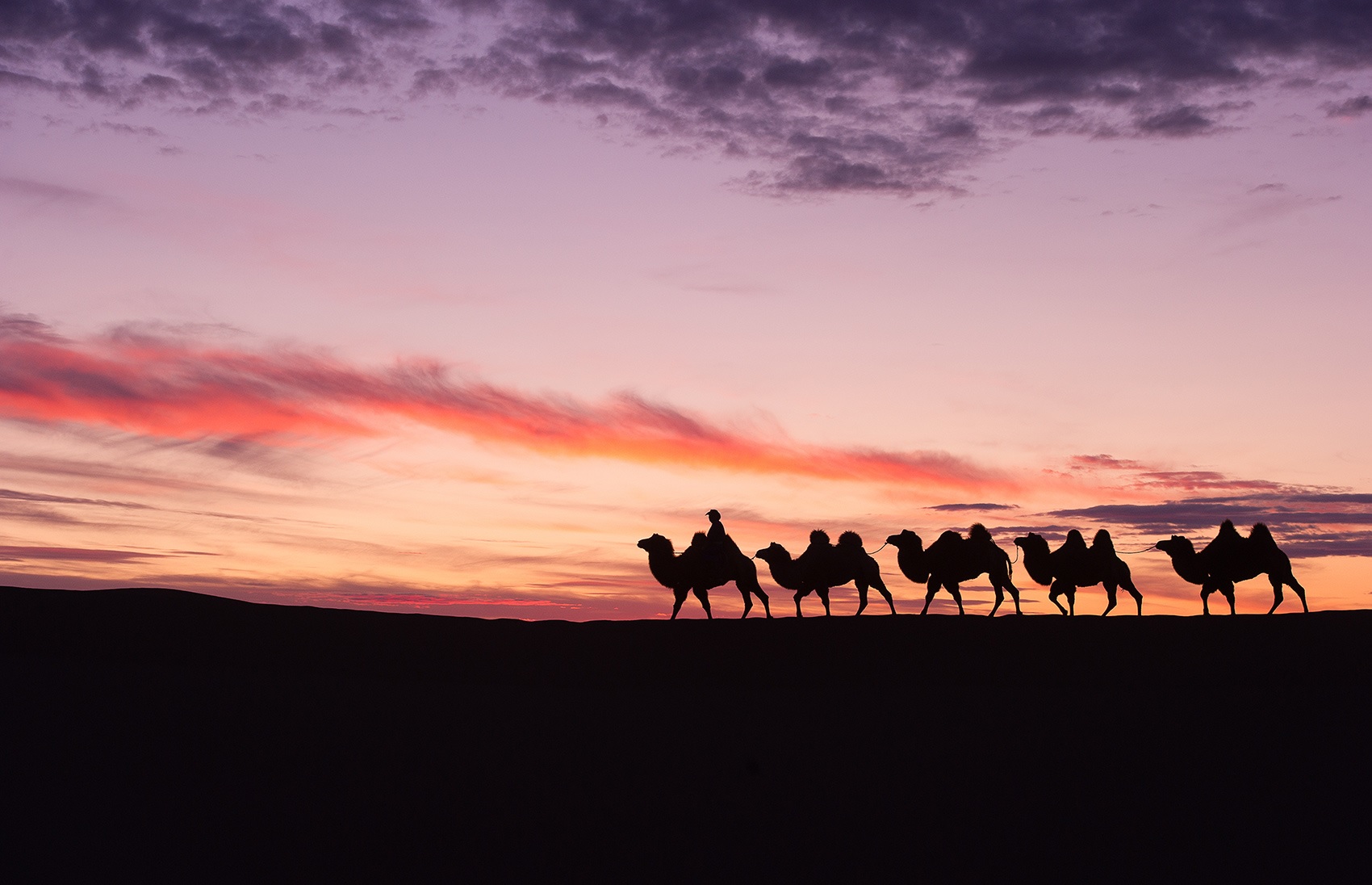MONGOLIA
About the Experience
FROM THE ALTAI TO THE GOBI
11 days/ 10 nights
Undertake an adventure spanning two of Mongolia’s most dramatic destinations: the Altai Mountains to the West, and the Gobi Desert to the south. High in the Altai, you will meet local Kazakh families and experience firsthand their traditional songs, customs, and heritage of golden eagle falconry, and visit such astonishing sites as an ancient burial mound and a prehistoric stone man statue of Turkish origin. Journeying then to the Gobi, you will explore the becalming landscape home to seas of flowing dune, the luxurious Three Camel Lodge, the mesmerizing Flaming Cliffs, and such enchanting animals as the Bactrian camel, Argali mountain sheep, and (although rarely seen) Snow Leopard.
DEPARTURE DATES:
June 6 -16, 2022
5-9 Travelers: USD $6,995 per person
10-14 Travelers: USD $6,395 per person
Internal airfare: USD $655 per person
Single Supplement: USD $1,995 per person
August 15-25, 2022
5-9 Travelers: USD $7,395 per person
10-14 Travelers: USD $6,795 per person
Internal airfare: USD $655 per person
Single Supplement: USD $1,995 per person
Trip Itenarary
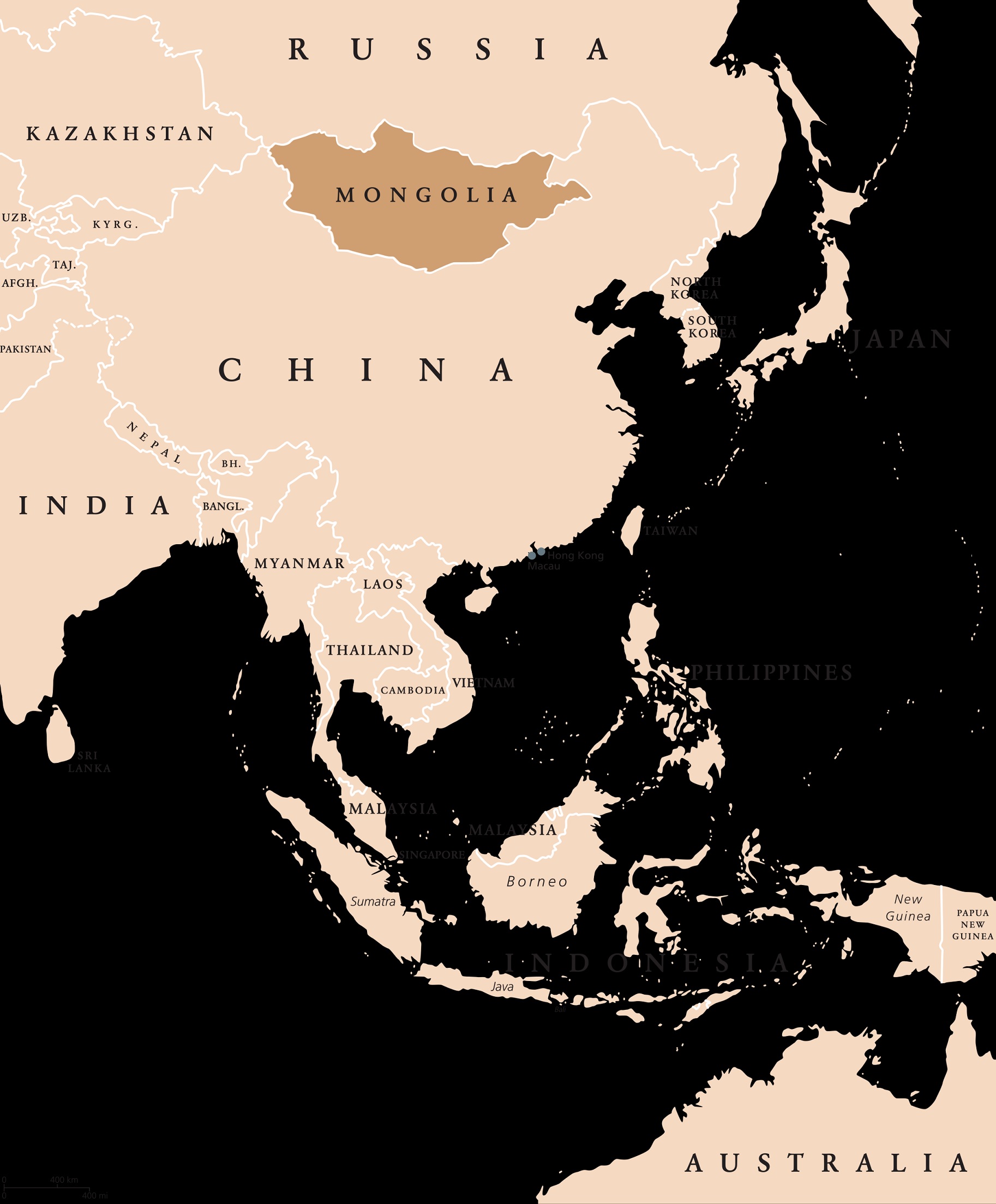
Day 1 -Welcome to Ulaanbaatar
The contrast between ancient traditions and a 21st-century democracy is most visible in Ulaanbaatar, where traditional gers and Buddhist monasteries sit side by side with modern high-rises. Upon arrival at the airport you are welcomed by your Mongolian guide and transferred to a centrally located hotel within walking distance of various museums and shops.
(Shangri-La Hotel – Deluxe Room)
Day 2 - Ulaanbaatar
The journey begins by exploring the cultural institutions of Ulaanbaatar, visiting the historically important Gandan Monastery. Strolling the monastery grounds, you hear the low tones of the horns used to call the lamas to the temple and observe their daily rituals, including the reading of sutras and the teachings of the Buddha. You will also see the magnificent 82-foot high gilded statue of Migjid Janraisig, “the lord who looks in every direction,” completely filling one of Gandan’s temples.
Drive through downtown Ulaanbaatar to the National Museum for an excellent overview of Mongolia’s history and culture. The museum displays traditional implements of daily nomadic life including Stone and Bronze Age artifacts, historical costumes of Mongolia’s minority tribes, sacred religious relics, and agricultural, fishing, and hunting equipment. And in the afternoon, climb the 300 steps to Zaisan Memorial, built by the former Soviet Union to commemorate fallen soldiers of World War II. It offers a beautiful panoramic view of the capital city, the Tuul River, and the surrounding countryside.
(Shangri-La Hotel – Deluxe Room)
Day 3 - Fly to Ulgii
In the morning you fly 1.5 hours to Ulgii, capital of Bayan-Ulgii, Mongolia’s westernmost province to spend the next few days. Dominated by the Mongolian Altai Mountains, the highest mountains in Mongolia, this isolated area has preserved the language, culture, and traditions of the Kazakh people found here. On arrival, you drive to your camp (1 hour and 10 minutes) and spend the rest of the day exploring the surrounding area on foot. There will be ample opportunities to meet local families and experience Kazakh culture.
(Nomadic Expeditions Wilderness Camp)
Day 4 - Tsengel Khairkhan Mountain
Upon driving to Tsengel Khairkhan Mountain (2 hours), today’s journey will take you past ancient burial mounds towards the Sagsai river to visit the Turkish stone man statue, a reminder of Mongolia’s rich ancient history can be found. Spend the day with a local Kazakh family gathered around, learning traditional Kazakh songs and enjoying tea and boortsog (fried cakes). Spend the rest of the afternoon hiking the foothills of Tsengel Khairkhan for spectacular views of the surrounding mountains.
(Nomadic Expeditions Wilderness Camp)
Day 5 - Tsambagarav Mountain - Day with Kazakh Eagle Hunter
Drive towards the snow-capped Tsambagarav Mountain (13,783 ft.) to Namarjin Valley (about a 1-hour drive), stopping at the Turkic stone monument dating back to 7-9 A.D. Two ethnic minorities live near Tsambagarav Mountain, the Uulds and the Kazakhs. This valley is the autumn pasture of the Uulds, a Mongol-speaking people belonging to the Oirat ethnic group. The Uulds still use animals for moving and carrying loads and are very proud of their rich history and the Uuld king Amarsanaa Khan, who led the rebellion against the Qin Dynasty’s invasion of Mongolia.
Spend the afternoon learning firsthand about the techniques of training and hunting with their golden eagles. Kazakh hunters ride dressed in traditional dark coats and scarlet hats with eagles perched on their arms. Weighing as much as fifteen pounds, these magnificent birds are trained from a young age to respond to hand signals and return to their owners after capturing small game.
Visit a local Uriankhai archer family, a minority tribe of Mongolians (estimated as 1% of the population) renowned for their archery skills (about 1 hour). Attend an archery exhibit and learn how the families make formidable compound bows, which with their advanced design, was a significant asset to Chinggis Khan and his descendants during their years of conquest.
(Nomadic Expeditions Wilderness Camp)
Day 6 - Return to Ulaanbaatar
If time permits in the morning, we will drive to Ulgii (about 1 hour and 10 minutes) and visit the local market and Mosque before the flight back to Ulaanbaatar. Upon arrival, you will transfer to your hotel and spend the rest of the afternoon at leisure. Your dinner is independent this evening.
(Shangri-La Hotel – Deluxe Room)
Day 7 - The Gobi - Three Camel Lodge - Moltsog Els
Today continue with your journey south to the Gobi (1.5 hours), Mongolia’s southernmost province of semi-arid desert. Contrary to the sameness that the word ‘desert’ suggests, the Gobi is a fascinating and diverse region and includes sites of some of the most important paleontological discoveries of the 20th century. For the next few days, explore the stunning landscapes of the Gobi, habitat for Bactrian camels, Argali mountain sheep, goitered gazelle, Golden Eagles, Saker Falcons, jerboas (similar to kangaroo rats), and many endemic reptiles.
The Gobi is also home to some of the Northern Hemisphere’s most rare and elusive mammals, such as the snow leopard, wild camel, and Gobi bear. On arrival, drive to the award-winning Three Camel Lodge located at Bulagtai Mountain on the edge of Gobi Gurvan Saikhan National Park (1 hour). The lodge offers a wide variety of activities to travelers from reading a book on Mongolia to watching a documentary about nomadic culture, and from learning traditional Mongolian games to enjoying a relaxing massage.
Later this afternoon, drive to Moltsog Els (45 minutes), one of the few regions of the Gobi covered by sand dunes. Upon arrival, you will meet with your camel wrangler at his home and mount your camels and begin your trek. You will head southeast on an almost 4-hour journey before returning back to the family. Return to the lodge in time for dinner.
(Three Camel Lodge – Deluxe Ger)
Day 8 - Yol Valley National Park
Cradled in the foothills of the Altai Mountains, an ancient river carved the surprisingly green Yol Valley, and its remnant streams create ice formations that sometimes persist as late as July. A hike through the valley leads to the habitat of indigenous vulture-like Lammergeiers, Altai snowcocks, ibex, yaks, and Argali mountain sheep. After exploring the valley, you will visit the local natural history museum for an overview of the flora and fauna of the surrounding area, followed by a drive to Dungenee Valley, a deep and narrow gorge where it is possible to view Argali sheep, Altai snowcocks, and ibex. Spend the evening at leisure, or participate in activities at the lodge, such as horseback riding or a nature walk.
(Three Camel Lodge – Deluxe Ger; B, L, D)
Day 9 - Havsgait Petroglyphs - Bulgan Sum - Flaming Cliffs
In the morning drive to the Havsgait Valley (25 minutes), site of ancient rock drawings left by early Gobi settlers for more than 15,000-40,000 years ago. Hundreds of petroglyphs adorn rocks scattered on the top of the mountain. Return to the lodge for lunch. If interested, you may ride mountain bikes back to the lodge (2 hours).
After lunch, drive to the Bulgan village (30 minutes), where the locals collectively grow vegetables in the Gobi region and supply produce to local ger camps – an example of local businesses being supported by ecotourism. Meet with a local farmer, who has taken an initiative to learn about growing vegetables in greenhouses and teaching the villagers how to utilize the greenhouse in growing their crops.
Then, drive to Bayan Zag (40 minutes), commonly known as the Flaming Cliffs for the orange glow of its rock at dawn and dusk. It was here in 1923 that Dr. Roy Chapman Andrews and his exploration team from the American Museum of Natural History found the first nest of dinosaur eggs. Although not obvious to the untrained eye, the Flaming Cliffs are rich with dinosaur fossils and have been the site of important paleontological discoveries. Return to the Three Camel Lodge overnight.
(Three Camel Lodge – Deluxe Ger)
Day 10 - Return to Ulaanbaatar
Upon arrival once more in the capital, visit the Zanabazar Fine Arts Museum, named in honor of Zanabazar, the renowned 17th-century artist and politician, who was also the first Buddhist leader of Mongolia. The museum contains one of the best collections of Buddhist art and artifacts in the world, including many of Zanabazar’s original works. The rest of the afternoon is yours, free at leisure to relax or explore the shopping downtown. In the evening, you will enjoy a performance featuring traditional Mongolian dancers and khoomi throat singers, followed by a farewell dinner at a local restaurant.
(Shangri-La Hotel – Deluxe Room)
Day 11 - Departure
Transfer to the airport for your departing flight.
MONGOLIA´S FESTIVALS
- ICE FESTIVAL, Lake Hovsgol (Feb, March)
- THOUSAND CAMEL FESTIVAL, Gobi (Beginning of March)
- NATIONAL NAADAM FESTIVAL (July 11,12,13)
- LOCAL NAADAM FESTIVALS ( June, July, August)
- THE GOLDEN EAGLE FESTIVAL (1st week of October)
Partners
